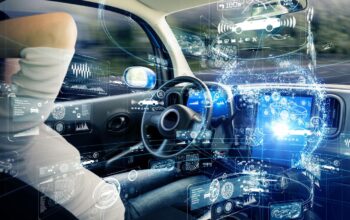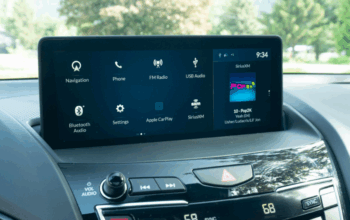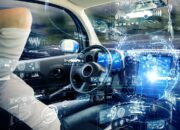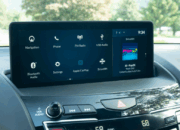In an increasingly complex and fast-paced world, the evolution of personal mobility has brought with it an ever-present need for enhanced safety. While the fundamental purpose of a vehicle is transportation, its ability to protect its occupants and others on the road has become a paramount concern for consumers, manufacturers, and regulators alike. The automotive industry is currently undergoing a revolutionary period, driven by advancements in artificial intelligence, sensor technology, connectivity, and data processing. This convergence of technologies is giving rise to a new generation of safety features that are not merely reactive but proactively prevent accidents and mitigate their severity. This comprehensive article delves into the transformative landscape of next-gen vehicle safety, exploring the technological underpinnings, the tangible benefits they offer, the challenges of integration, and the exciting future that promises even safer journeys for all.
The Evolution of Automotive Safety: A Historical Perspective
To truly appreciate the significance of current advancements, it’s beneficial to briefly look back at the journey of automotive safety. For decades, safety efforts primarily focused on passive safety features designed to protect occupants during a crash.
A. Early Innovations (Pre-1950s): Initial safety measures were rudimentary, focusing on stronger chassis, basic headlights, and mechanical brakes. B. The Seatbelt Era (1950s-1970s): The introduction and widespread adoption of the three-point seatbelt by Volvo in 1959 marked a pivotal moment, significantly reducing fatalities and severe injuries. This period also saw the development of crumple zones designed to absorb impact energy. C. Airbag Deployment (1980s-1990s): Airbags became standard, providing supplementary restraint, cushioning occupants during high-speed collisions. Anti-lock Braking Systems (ABS) also began to appear, preventing wheel lock-up during hard braking. D. Stability Control (2000s): Electronic Stability Control (ESC) systems emerged, using sensors to detect loss of traction and automatically apply brakes to individual wheels to help drivers maintain control. This was a crucial step towards active safety.
While these passive and early active systems have saved countless lives, they largely acted as damage control. The “next-gen” paradigm shifts the focus from merely surviving a crash to actively avoiding one in the first place.
Pillars of Next-Gen Vehicle Safety
The current revolution in vehicle safety is built upon several interconnected technological pillars, each contributing to a holistic protective ecosystem.
A. Advanced Driver-Assistance Systems (ADAS)
ADAS are perhaps the most visible and widely adopted next-gen safety features. These systems use an array of sensors—cameras, radar, lidar, ultrasonic—to perceive the vehicle’s surroundings, interpret potential hazards, and provide warnings or even take corrective action.
-
Forward Collision Warning (FCW) and Automatic Emergency Braking (AEB):
- FCW: Alerts the driver to an impending collision with a vehicle or obstacle ahead. It typically uses radar or camera sensors to monitor the distance and closing speed.
- AEB: If the driver does not react to the FCW, AEB automatically applies the brakes to mitigate or prevent a collision. Some advanced systems can detect pedestrians and cyclists. This technology is a game-changer in urban environments and highway driving, significantly reducing rear-end collisions.
-
Lane Keeping Assist (LKA) and Lane Departure Warning (LDW):
- LDW: Warns the driver if the vehicle begins to drift out of its lane without an activated turn signal. This is crucial for combating drowsy driving or momentary lapses in attention.
- LKA: Actively steers the vehicle back into its lane if it detects unintentional drifting. More advanced systems, often called Lane Centering Assist, can keep the vehicle precisely in the center of its lane, reducing driver fatigue on long journeys.
-
Blind Spot Monitoring (BSM):
- Uses radar sensors to detect vehicles in the driver’s blind spots. An indicator light (often in the side mirror) illuminates when a vehicle is detected, and an audible warning may sound if the turn signal is activated while a vehicle is present. This is invaluable for safe lane changes.
-
Adaptive Cruise Control (ACC):
- Beyond traditional cruise control, ACC automatically adjusts the vehicle’s speed to maintain a safe following distance from the car ahead. It uses radar to detect the preceding vehicle and can accelerate or decelerate as needed, even bringing the vehicle to a complete stop and resuming travel in traffic jams (stop-and-go ACC). This reduces driver fatigue and improves traffic flow.
-
Rear Cross-Traffic Alert (RCTA) and Rear Automatic Braking (RAB):
- RCTA: Warns the driver of approaching vehicles when backing out of a parking space, especially useful in crowded parking lots where visibility is limited.
- RAB: If the driver doesn’t react to the RCTA, the system can automatically apply the brakes to prevent a collision with a crossing vehicle or pedestrian.
-
Parking Assist Systems:
- From simple parking sensors that beep when nearing an obstacle to fully automated self-parking systems that can steer, brake, and even shift gears to parallel or perpendicular park the vehicle. These systems significantly reduce stress and the likelihood of minor parking lot fender benders.
-
Traffic Sign Recognition (TSR):
- Uses a front-facing camera to detect and display speed limit signs, stop signs, and other important traffic information on the instrument cluster or head-up display, helping drivers stay compliant and aware.
B. Enhanced Sensor Technologies
The accuracy and reliability of ADAS and other safety systems heavily rely on sophisticated sensors.
- High-Resolution Cameras: Provide detailed visual information, crucial for lane detection, traffic sign recognition, pedestrian identification, and object classification. Stereoscopic cameras can also provide depth perception.
- Radar: Excellent for measuring distance and relative speed, especially in adverse weather conditions like fog or heavy rain, where optical sensors might struggle. Used extensively in ACC and AEB.
- Lidar (Light Detection and Ranging): Emits pulsed laser light to measure distances and create highly detailed 3D maps of the environment. Lidar is crucial for precise object detection and mapping in higher levels of autonomous driving, offering superior accuracy compared to radar in certain scenarios.
- Ultrasonic Sensors: Typically used for short-range detection, common in parking sensors and blind spot monitoring, providing proximity alerts.
- Infrared Cameras: Can detect heat signatures, useful for night vision systems to identify pedestrians and animals in low-light conditions.
C. Vehicle-to-Everything (V2X) Communication
V2X technology allows vehicles to communicate with other vehicles (V2V), infrastructure (V2I), pedestrians (V2P), and the cloud (V2C). This promises a future where vehicles are part of an interconnected safety network.
- V2V (Vehicle-to-Vehicle): Vehicles can share real-time information about their speed, position, braking, and potential hazards. This could alert drivers to invisible dangers like sudden braking around a blind corner or an accident ahead, significantly reducing multi-vehicle collisions.
- V2I (Vehicle-to-Infrastructure): Cars can communicate with traffic lights, road signs, and road sensors. This could optimize traffic flow, warn drivers about upcoming red lights, construction zones, or slippery roads, and even provide real-time parking availability.
- V2P (Vehicle-to-Pedestrian/Cyclist): Via smartphones or dedicated devices, vehicles could be alerted to the presence and movement of pedestrians and cyclists, offering an additional layer of protection, especially in urban environments.
- V2C (Vehicle-to-Cloud): Vehicles can upload data to the cloud for analysis and receive information like real-time traffic updates, navigation assistance, and software updates. This enables continuous improvement of safety features and predictive maintenance.
V2X has the potential to move safety from individual vehicle awareness to a collective, anticipatory system, preventing accidents before they even become an immediate threat.
D. Driver Monitoring Systems (DMS)
DMS use cameras and sensors to monitor the driver’s state, looking for signs of distraction, fatigue, or impairment.
- Eye-Tracking: Detects if the driver’s eyes are off the road for too long, if they are drowsy (e.g., frequent blinking, yawning), or if they are looking at a smartphone.
- Head Position Tracking: Monitors head orientation to ensure the driver is facing forward and paying attention.
- Haptic Feedback: If distraction or fatigue is detected, the system can issue audible warnings, visual alerts, or even vibrate the steering wheel or seat.
- Integration with ADAS: DMS can sometimes work in conjunction with ADAS. For example, if the DMS detects severe distraction, the vehicle’s AEB system might become more aggressive in its warnings or braking intervention.
DMS are critical for the safe deployment of higher levels of autonomous driving, ensuring the driver is ready to take back control when needed.
E. Cybersecurity for Automotive Systems
As vehicles become more connected and software-defined, they also become potential targets for cyberattacks. Cybersecurity is no longer an afterthought but an integral part of vehicle safety.
- Secure Over-the-Air (OTA) Updates: Ensuring that software updates delivered wirelessly are authenticated and encrypted to prevent malicious code injection.
- Intrusion Detection and Prevention Systems (IDPS): Monitoring vehicle networks for unusual activity that might indicate an attempted hack.
- Secure Boot Mechanisms: Ensuring that only trusted software can run on vehicle control units.
- Data Privacy: Protecting sensitive driver and vehicle data from unauthorized access.
- Threat Intelligence Sharing: Collaboration across the automotive industry to identify and mitigate new cyber threats.
A compromised vehicle can pose significant safety risks, making robust cybersecurity measures fundamental to next-gen vehicle protection.
The Benefits of Next-Gen Vehicle Safety Features
The proliferation of these advanced safety features offers a multitude of benefits that extend far beyond individual vehicle occupants.
A. Significant Reduction in Accidents and Fatalities
This is the primary goal. By providing early warnings, active interventions, and even taking over control in critical situations, these systems dramatically reduce the likelihood of collisions, especially those caused by human error (e.g., distraction, fatigue, misjudgment). Statistics from organizations like the IIHS (Insurance Institute for Highway Safety) consistently show a measurable reduction in crashes for vehicles equipped with AEB, BSM, and LDW.
B. Mitigation of Injury Severity
Even if an accident cannot be entirely prevented, next-gen systems can often reduce its severity. For example, AEB might reduce impact speed, leading to less forceful collisions and consequently, less severe injuries for occupants. Pre-collision systems can also pre-tension seatbelts and prepare airbags for deployment.
C. Enhanced Driver Confidence and Reduced Fatigue
ADAS features like Adaptive Cruise Control and Lane Centering Assist reduce the cognitive load on drivers, particularly during long highway drives or in stop-and-go traffic. This leads to less fatigue, allowing drivers to remain more alert and focused when manual intervention is required. Increased awareness from systems like BSM also instills greater confidence in maneuvering.
D. Lower Insurance Premiums
As accident rates and injury severities decrease, insurance companies often offer lower premiums for vehicles equipped with advanced safety features. This provides a direct financial incentive for consumers to adopt safer vehicles.
E. Improved Traffic Flow and Reduced Congestion
V2X communication and advanced ADAS (like adaptive cruise control) can contribute to smoother traffic flow by optimizing vehicle spacing and reducing sudden braking events. This has the potential to alleviate congestion, particularly in urban areas.
F. Foundation for Autonomous Driving
Many next-gen safety features are direct building blocks for higher levels of autonomous driving. The sensors, algorithms, and decision-making capabilities developed for ADAS are refined and integrated into fully self-driving systems, paving the way for a truly driverless future.
Challenges and Considerations
Despite their immense promise, the implementation and widespread adoption of next-gen safety features face several challenges.
A. Cost and Accessibility
Advanced safety features often come with a higher price tag, making them more accessible on premium vehicles initially. Ensuring these life-saving technologies become standard across all vehicle segments, including more affordable models, is crucial for equitable safety improvements.
B. Sensor Limitations and Environmental Factors
While highly advanced, sensors are not infallible. Rain, snow, heavy fog, direct sunlight, or even dirt/mud on a sensor can degrade their performance. Understanding these limitations and developing robust systems that can operate reliably in diverse conditions is an ongoing challenge.
C. Driver Over-Reliance and Disengagement
There’s a concern that drivers might become overly reliant on ADAS, leading to decreased attention or a false sense of security. This “automation complacency” could result in slower reaction times when manual intervention is needed. Effective driver monitoring systems and clear user interfaces are vital to mitigate this risk.
D. Software Complexity and Testing
The software powering these systems is incredibly complex, involving millions of lines of code. Thorough testing in countless real-world and simulated scenarios is essential to ensure reliability and prevent unintended behavior. Over-the-air updates help with ongoing improvements but also introduce new security considerations.
E. Regulatory Frameworks and Standardization
Governments and regulatory bodies worldwide are working to establish appropriate standards and regulations for these emerging technologies. Harmonizing these regulations across different regions is challenging but necessary for global market adoption and consistent safety levels.
F. Ethical Dilemmas in Autonomous Systems
As vehicles gain more autonomy, ethical questions arise, particularly in unavoidable accident scenarios. How should an autonomous vehicle be programmed to react when faced with a choice between two bad outcomes? These “trolley problem” scenarios are complex and require societal consensus.
G. Data Privacy and Security Concerns
The vast amount of data collected by connected vehicles raises significant privacy concerns. Ensuring transparent data collection practices, secure data storage, and strict adherence to privacy regulations is paramount.
The Future: Towards Vision Zero and Beyond
The trajectory of next-gen vehicle safety features is clear: a relentless pursuit of Vision Zero, a global initiative aiming to achieve zero traffic fatalities and serious injuries. This ambitious goal is increasingly attainable thanks to the continuous integration of advanced technologies.
A. Full Autonomous Driving (Level 4 and 5)
While current next-gen safety features are largely Level 1 or 2 ADAS (requiring constant driver supervision), the ultimate goal is Level 4 (high automation in specific domains) and Level 5 (full automation in all conditions). In these scenarios, the vehicle itself becomes the ultimate safety system, eliminating human error entirely. The safety features discussed today are critical stepping stones towards this autonomous future.
B. Predictive Maintenance and Proactive Safety
Beyond preventing immediate accidents, future systems will likely incorporate more advanced predictive analytics. By constantly monitoring vehicle health and performance, they could identify potential component failures before they occur, alerting drivers or even scheduling maintenance to prevent breakdowns that could lead to dangerous situations.
C. Personalized Safety Profiles
Future vehicles might adapt safety interventions based on individual driver profiles, habits, and even biometric data (e.g., heart rate, stress levels). This personalized approach could offer more tailored warnings and interventions, optimizing safety for each unique driver.
D. Integrated Health and Wellness Monitoring
Expanding beyond just driving performance, vehicles could become health and wellness hubs, monitoring occupant vital signs and alerting emergency services in case of a medical emergency during transit. This adds another layer to occupant safety and well-being.
E. Swarm Intelligence and Collective Safety
As more vehicles become connected, the potential for “swarm intelligence” grows. Vehicles could collectively share real-time data on road conditions, hazards, and traffic patterns, creating an unprecedented level of situational awareness that dramatically enhances safety for all connected vehicles. Imagine every vehicle acting as a sensor, contributing to a global, real-time map of road safety.
Conclusion
The journey of automotive safety has been remarkable, progressing from basic restraints to sophisticated systems that actively anticipate and prevent collisions. Next-gen vehicle safety features, powered by advanced sensors, AI, and connectivity, represent a monumental leap forward, fundamentally redefining what it means to be safe on the road.
While challenges related to cost, regulation, and public acceptance remain, the relentless innovation in this field promises a future where accidents become increasingly rare. By reducing human error, enhancing situational awareness, and mitigating impact forces, these technologies are not just features; they are transformative guardians, protecting lives and paving the way for a more efficient, enjoyable, and ultimately, safer mobility experience for everyone. The road ahead is not just smarter; it’s profoundly safer.















